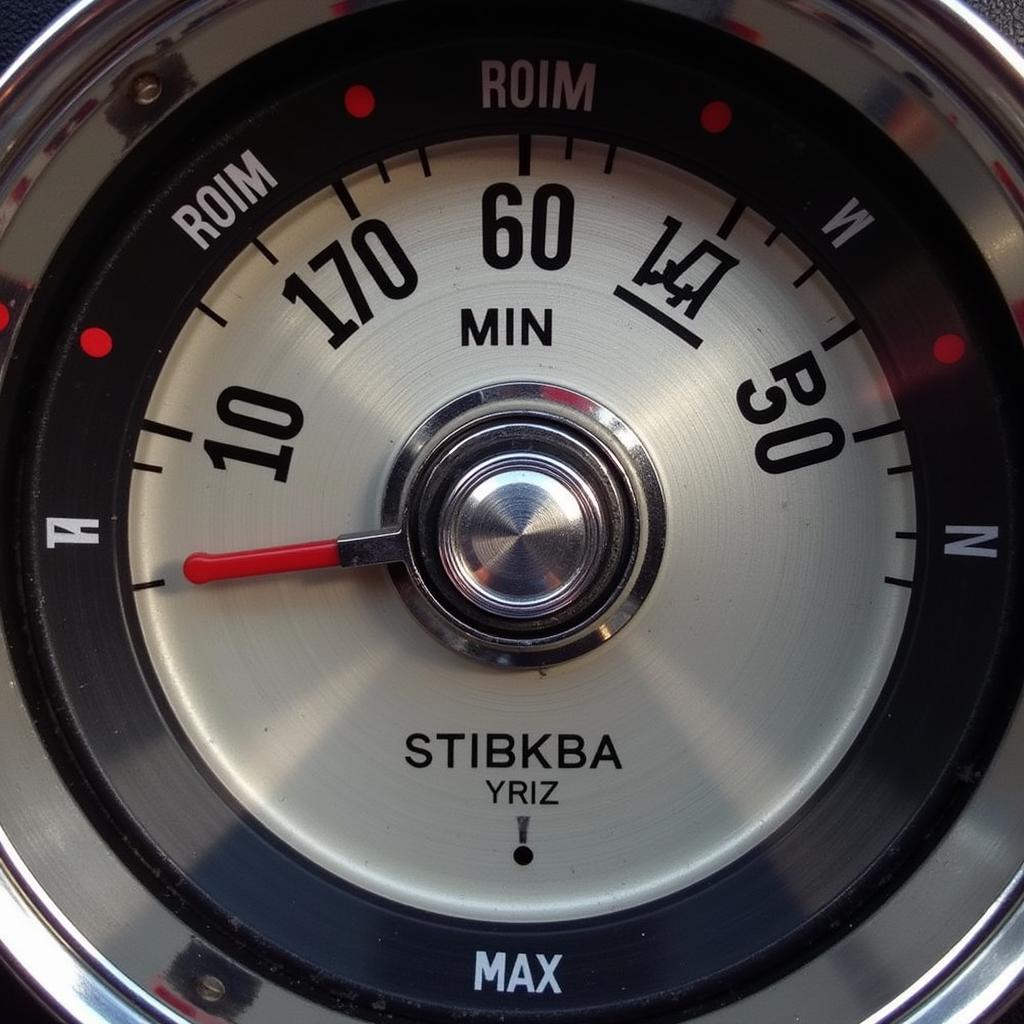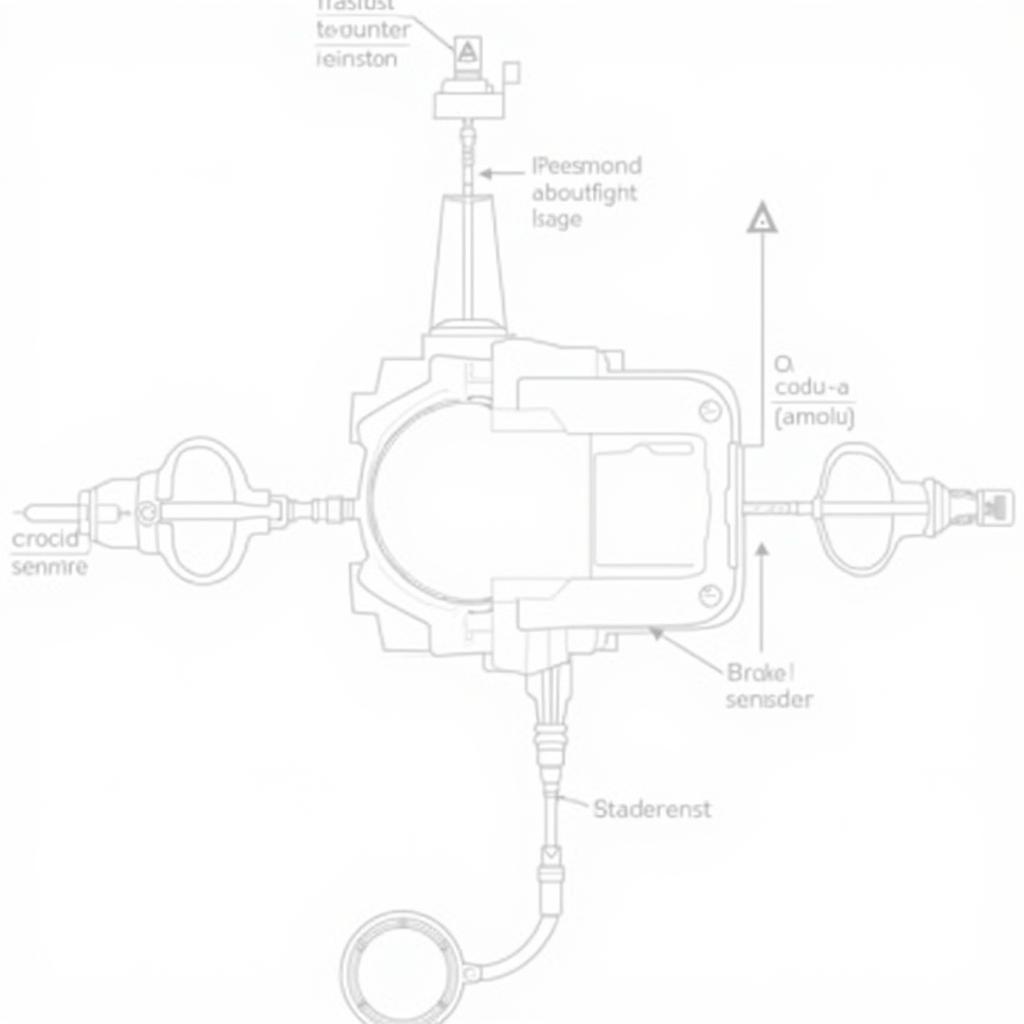The brake warning light on your 1970 Chevy Nova is more than just a nuisance; it’s a critical safety indicator. Ignoring it could lead to serious consequences. Whether you’re a seasoned mechanic or a DIY enthusiast, this comprehensive guide will equip you with the knowledge to diagnose and fix the underlying cause of your Nova’s illuminated brake warning light.
Understanding the Basics: Why is My Brake Light On?
Before diving into specifics, let’s review the common culprits behind a glowing brake warning light in a 1970 Nova:
- Low Brake Fluid: This is often the primary suspect. A leak in your brake lines or a worn-out master cylinder can cause a drop in brake fluid level, triggering the warning light.
- Worn Brake Pads: As your Nova’s brake pads wear down, the brake caliper pistons need to extend further to apply the brakes. This can lead to a lower brake fluid level and activate the warning light.
- Faulty Brake Light Switch: Located at the brake pedal, this switch signals the brake lights to illuminate when you press the pedal. A malfunctioning switch can cause the warning light to stay on.
- Parking Brake Engaged: It might seem obvious, but always double-check that your parking brake is fully disengaged. Even a slight engagement can trigger the warning light.
- Issues with the Brake System: More serious problems like a failing master cylinder, faulty proportioning valve, or air in the brake lines can also illuminate the warning light.
Diagnosing the Problem: Step-by-Step Guide
Follow these steps to pinpoint the root cause of your 1970 Nova’s brake warning light issue:
- Check the Brake Fluid Level: Park your Nova on a level surface and locate the brake fluid reservoir, typically found on the driver’s side of the engine bay. The reservoir will have a “Min” and “Max” marking. If the fluid level is below “Min,” add the appropriate brake fluid as specified in your owner’s manual.
- Inspect for Leaks: Thoroughly examine the brake lines, hoses, and connections for any signs of leakage. Look for wet spots or dripping fluids. If you find a leak, address it immediately. Repairing or replacing leaking components is crucial for a safe and functional braking system.
- Check the Brake Pads: Inspect your brake pads for wear. If they are worn thin, it’s time for a replacement. W
 Brake Fluid Reservoir
Brake Fluid Reservoir
- Test the Brake Light Switch: Locate the brake light switch above the brake pedal. With the ignition off, depress the brake pedal and have a helper observe if the brake lights illuminate. If not, the switch may be faulty and require replacement.
- Inspect the Parking Brake: Ensure the parking brake is fully released. If the light remains on, there might be an issue with the parking brake mechanism itself, requiring further inspection.
When to Seek Professional Help
While some brake light issues are straightforward, others demand expert attention. If your Nova’s brake warning light persists after basic troubleshooting or you suspect a more complex problem, seek assistance from a qualified mechanic specializing in classic cars.
“Ignoring a brake warning light is like playing Russian roulette with your safety,” warns John Smith, a seasoned mechanic with over 30 years of experience working on classic cars. “These cars require specialized knowledge and attention, especially when it comes to critical safety systems like brakes.”
Advanced Troubleshooting: Addressing Complex Issues
If the basic checks haven’t resolved the issue, consider these advanced troubleshooting steps:
- Inspect the Master Cylinder: A failing master cylinder can lead to a loss of brake pressure and illuminate the warning light. Look for leaks around the master cylinder and check for proper pedal feel. If the pedal feels spongy or goes to the floor, the master cylinder may be compromised.
- Check the Proportioning Valve: The proportioning valve regulates brake pressure distribution between the front and rear wheels. A malfunctioning valve can disrupt this balance and trigger the warning light. Inspect the valve for leaks and proper operation.
- Bleed the Brake System: Air in the brake lines can cause a soft pedal and reduced braking performance, potentially triggering the warning light. Bleeding the brake system removes any trapped air, restoring optimal hydraulic pressure.
Maintaining Your Nova’s Brakes for Optimal Safety
Prevention is key when it comes to brake safety. Follow these maintenance tips:
- Regular Brake Fluid Checks: Inspect your brake fluid level at least once a month and top it off as needed.
- Timely Brake Pad Replacements: Replace worn brake pads promptly to avoid damage to rotors and other brake components.
- Annual Brake Inspections: Schedule a comprehensive brake inspection with a trusted mechanic at least once a year, or more frequently if you drive your Nova regularly.
Conclusion
Addressing your 1970 Nova’s illuminated brake warning light is not just a matter of car maintenance; it’s about prioritizing your safety and the safety of others on the road. By understanding the potential causes, diligently following the troubleshooting steps, and seeking professional help when needed, you can ensure your classic Nova’s braking system is in optimal condition for years of safe and enjoyable driving.

